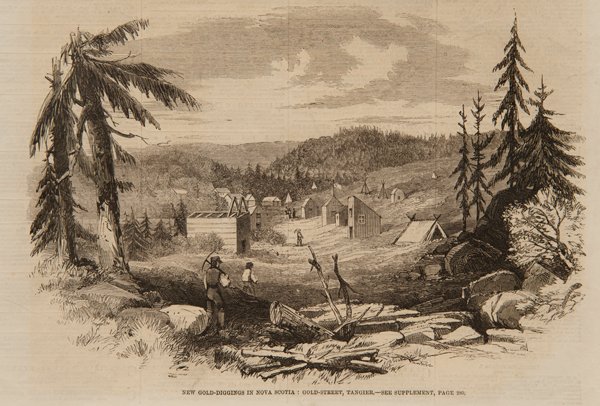#NovaScotia has 64 historical #gold districts – areas in which gold exploration and/or #mining took place in the 1800s and 1900s.
Check out this threat to learn more!
#nspoli #cbpoli #capebreton #ns #cb @LarryHarrisonPC @SteveStreatch @David_Hendsbee @lloydphines

Check out this threat to learn more!
#nspoli #cbpoli #capebreton #ns #cb @LarryHarrisonPC @SteveStreatch @David_Hendsbee @lloydphines


Establishing #gold districts allowed @nsgov to administer NS mineral rights. It also helped avoid the crime, violence and disease that accompanied gold rushes in California (1848) and Australia (1851) by establishing a legal process for staking claims and managing areas.
#nspoli
#nspoli

Some #NovaScotia #gold districts saw a lot of #mining but many saw very little.
The #Tangier gold district was one of the first established. Gold was discovered there in 1860 and over 600 miners and prospectors arrived in the Tangier area within a year.
#nspoli #cbpoli #NS #CB
The #Tangier gold district was one of the first established. Gold was discovered there in 1860 and over 600 miners and prospectors arrived in the Tangier area within a year.
#nspoli #cbpoli #NS #CB

Government officials laid out mining lots approximately 16 metres wide by 7 metres long along the strike of the veins known at that time. This led to excavation of 114 shafts averaging 22 metres in depth.
#nspoli #cbpoli #Novascotia #capebreton #NS #CB #gold #mining
#nspoli #cbpoli #Novascotia #capebreton #NS #CB #gold #mining

Recorded #gold production in #Tangier started in 1862 and continued almost every year until 1918. 29,360 ounces of gold were recovered in total.
#nspoli #cbpoli #novascotia #capebreton #cb #ns
#nspoli #cbpoli #novascotia #capebreton #cb #ns

A lot of #gold was lost to the tailings due to the lack of sophistication in processing at the time. It’s estimated that only about 50% of gold was recovered from the ore in the early days.
#novascotia #caprebreton #nspoli #cbpoli #NS #CB #tangier
#novascotia #caprebreton #nspoli #cbpoli #NS #CB #tangier

Sometimes mined #gold didn’t even make it out of the mine! In 1936, a piece of gold quartz the size of an apple, which contained 20 ounces of gold, was found in a waste rock pile inside the Kent Shaft. Today, those 20 ounces would be worth about $30,000.
#nspoli #cbpoli #NS #cb
#nspoli #cbpoli #NS #cb

A number of other nuggets ranging from 1/2 to 4 ounces of #gold were also found in this discarded rock.
#nspoli #cbpoli #NovaScotia #CapeBreton #NS #CB
#nspoli #cbpoli #NovaScotia #CapeBreton #NS #CB

In contrast, modern #mining is a science- and tech-based business. For example, #MooseRiver, one of the most efficient and lowest-cost #gold mines globally, is extracting tiny, often microscopically small flecks of gold from rock. Its also cleaning up historical tailings.
#nspoli
#nspoli

You can learn more about #NovaScotia's #gold districts at novascotiagold.ca…/explo…/carte_dor-gold_map-eng.php
#nspoli #cbpoli #CapeBreton #NS #CB #mining
#nspoli #cbpoli #CapeBreton #NS #CB #mining
• • •
Missing some Tweet in this thread? You can try to
force a refresh



























